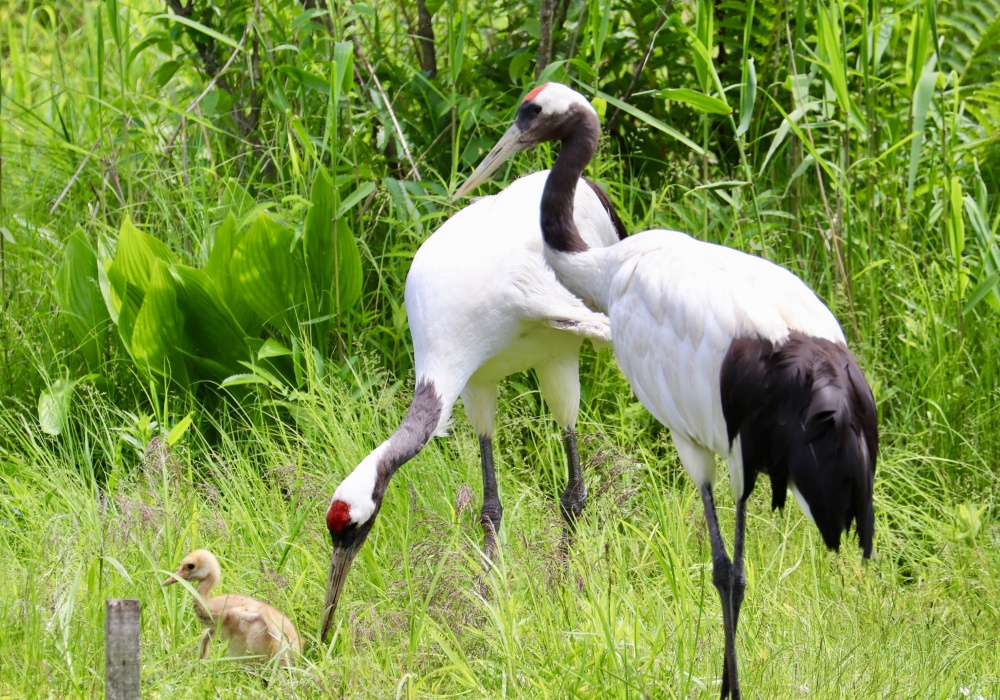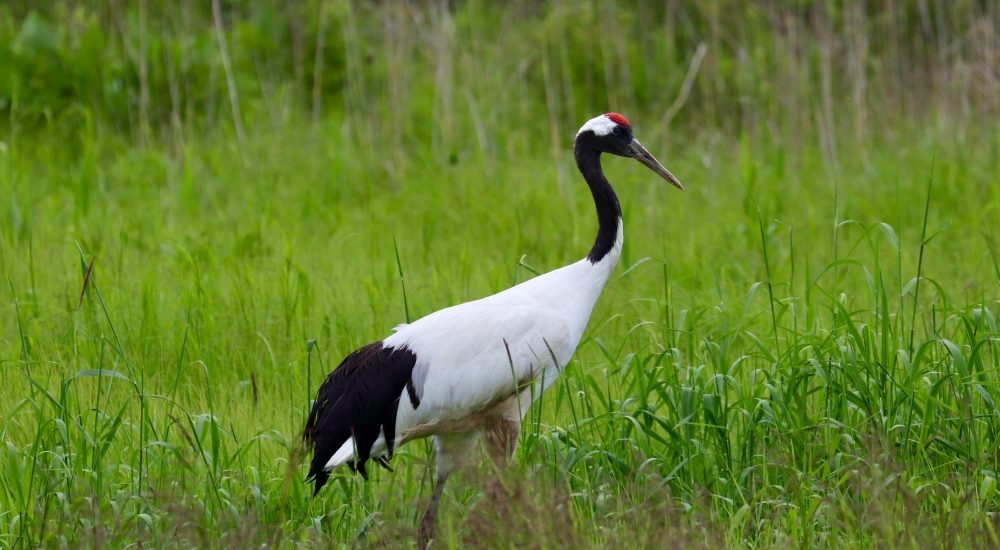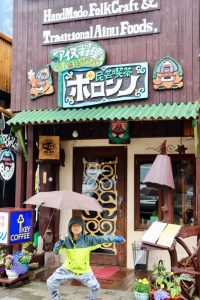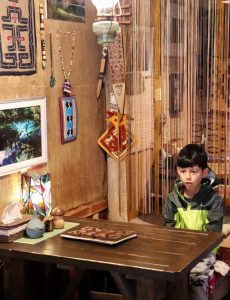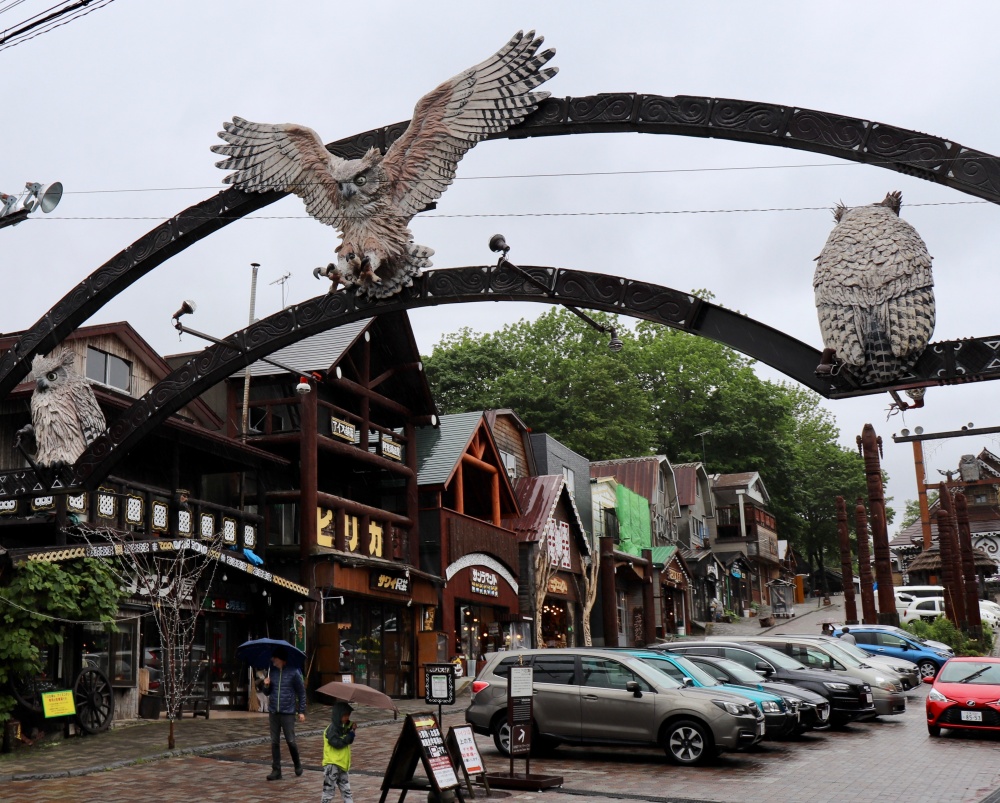
We said goodbye to our seaside home and drove south to the city of Kushiro for its Ainu culture, famed marimo balls and red-crowned cranes. Our first stop in Kushiro was in Ainu Kotan Village next to Lake Akan at the tiny rustic restaurant Poronno serving traditional Ainu cooking. Although the Ainu are the indigenous people of Hokkaido, they weren’t recognized by the Japanese government as being indigenous to Japan until 2008.
We were greeted by large owls and totem poles on a somewhat Disneyfied street as we headed into the restaurant. Weavings, carvings and lots of wood surrounded us in a hut like room, which certainly added a heavy helping of ambience. Ainu cuisine is very different from the cuisine we’re used to when we think of Japanese food (e.g. miso, sashimi, etc.). Cooked meats such as venison and salmon feature heavily as do wild mountain greens and root vegetables. There are only a handful of places in the world which serve Ainu cuisine, so we felt very fortunate to have found one. The venison bowl I ordered was stunning with tender slices of grilled venison paired with boiled wild mountain greens over a bowl of rice.
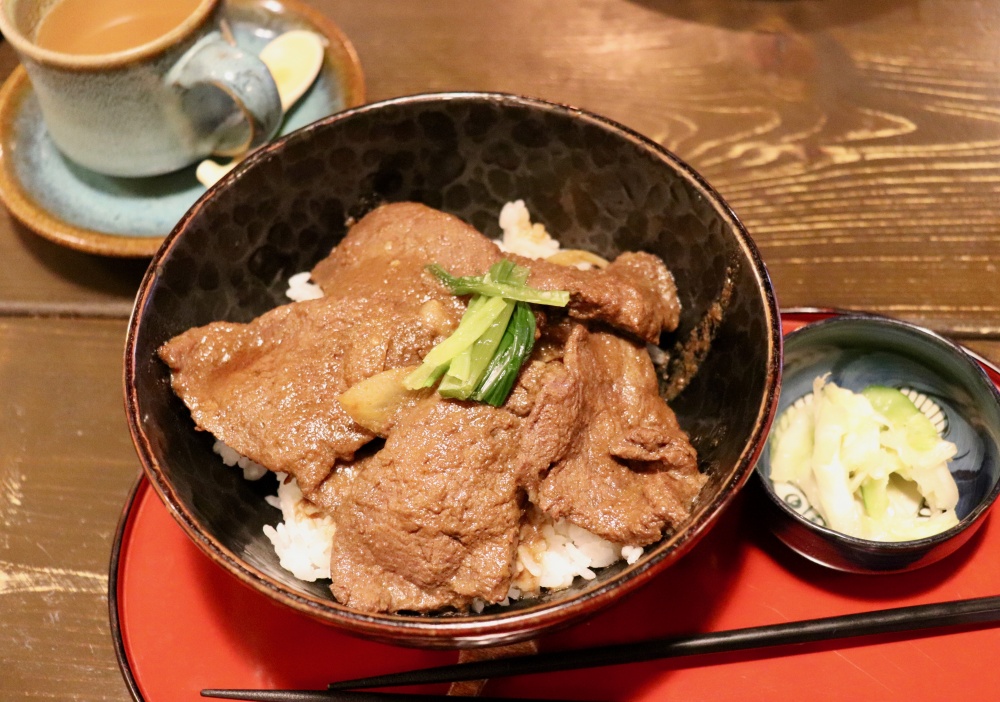
Although none of us knew what ‘haskap’ was on the menu Jules wanted to try the ‘haskap soda,’ since he said he had never tried it before. Haha, that kid makes his foodie mama proud! We later found out that haskap is a fruit (aka honeyberry) found in the cooler climes of Russia, Japan, Poland and Canada. It looks like a gigantic bell-shaped blueberry, and it’s apparently high in antioxidants. I wouldn’t be surprised if it ended up at the Park Slope Food Co-op.
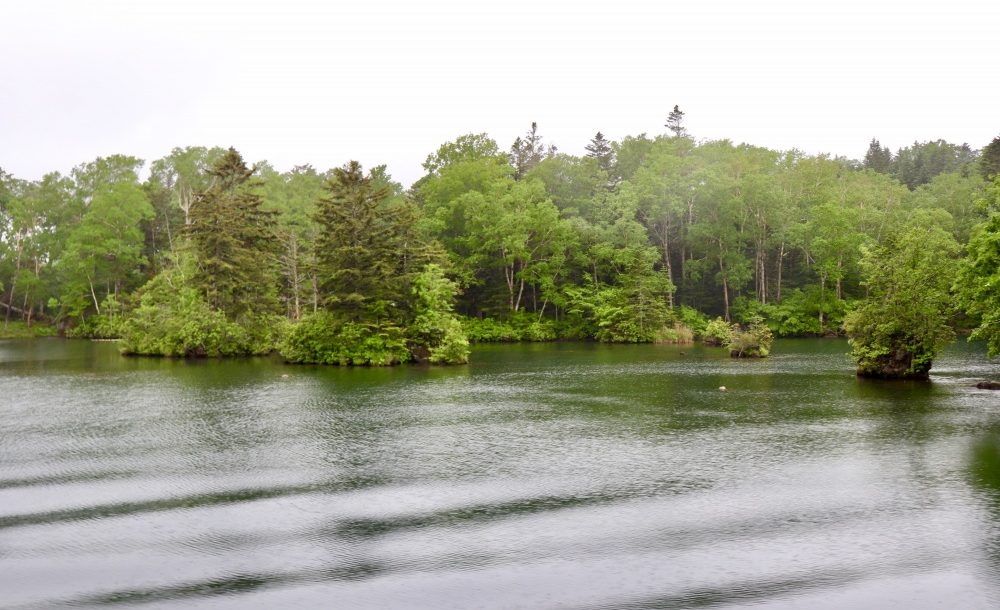
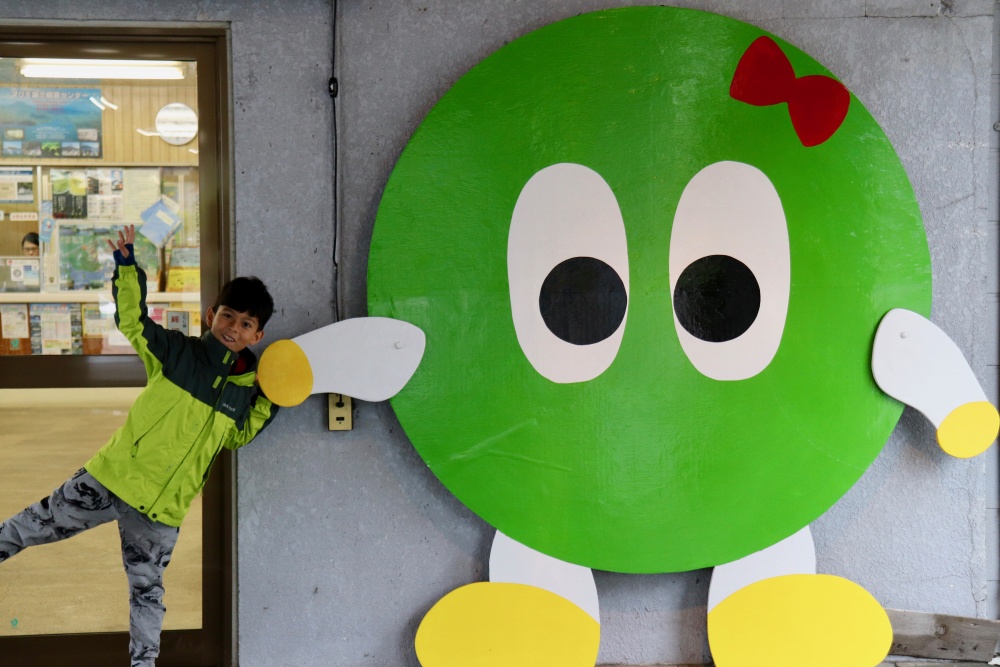
After lunch we drove over to the port and waited to board our ferry to take us to the Marimo Exhibition and Observation Center on Churui Island in the middle of Lake Akan. Lake Akan’s claim to fame is the rare algae species, called ‘marimo’ (‘ball seaweed’ in Japanese), that grows in its cold and pure water. Marimo are also found in lakes in Iceland, Scotland, Estonia and Australia, but none of them grow to the size of those found in Lake Akan.

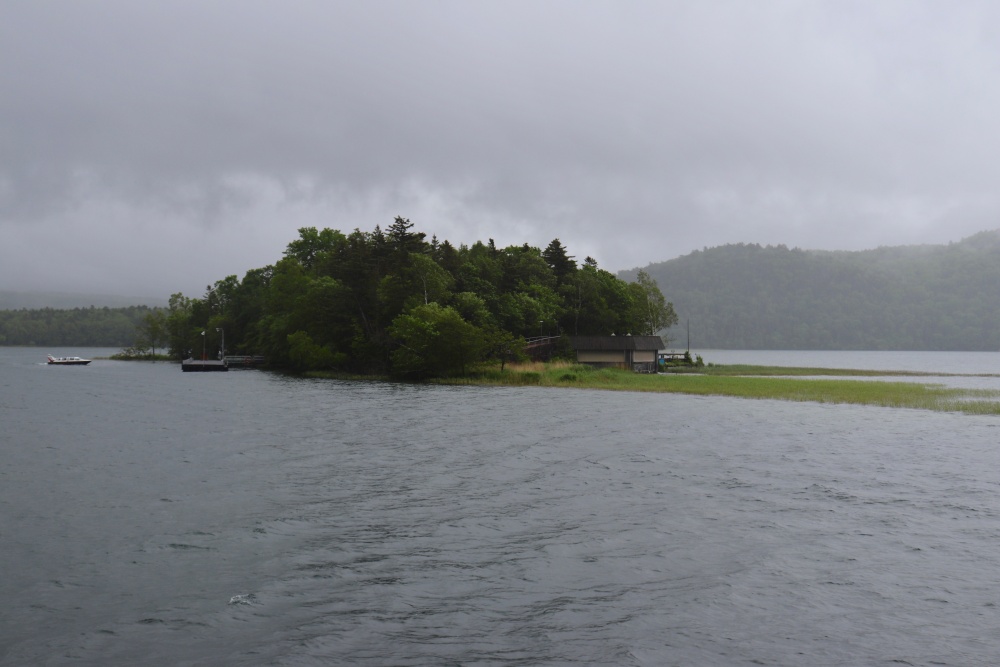
Due to factors such as the shape of the lake’s bottom, type of sedimentation and wave currents the algal filaments of the marimo collect into the shape of a ball and with an annual growth of 5mm in diameter, the marimo in Lake Akan can reach an impressive 20-30cm in diameter. The Japanese have done a good job marketing these algae balls, and even hardened cynics have to admit that they’re pretty darn cute. We ran up and down the aisles of the ferry with marimo soft serve in hand once we realized we were the only ones on the boat!
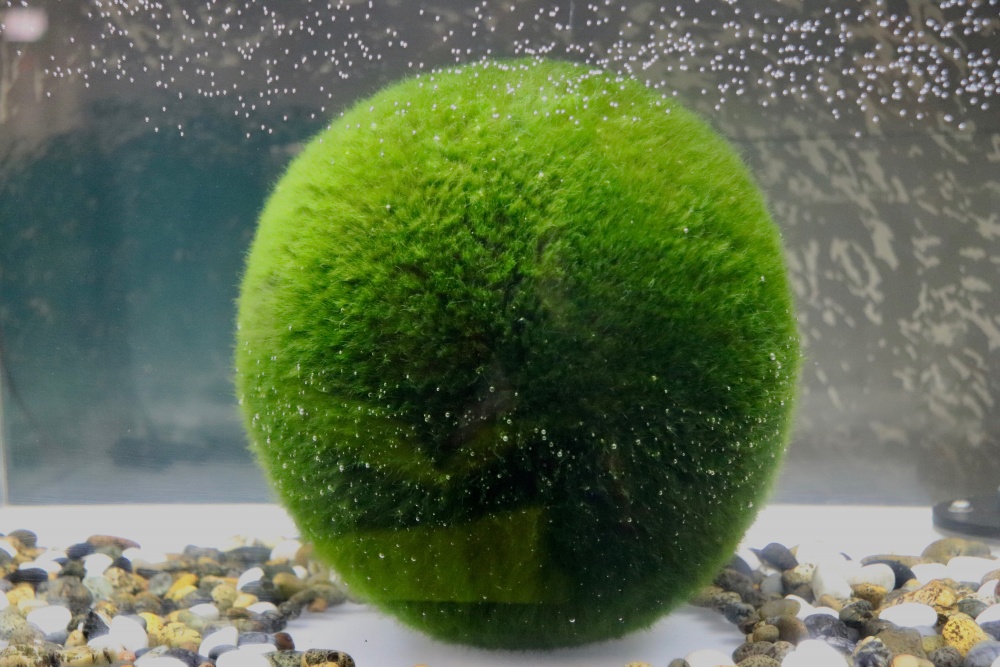
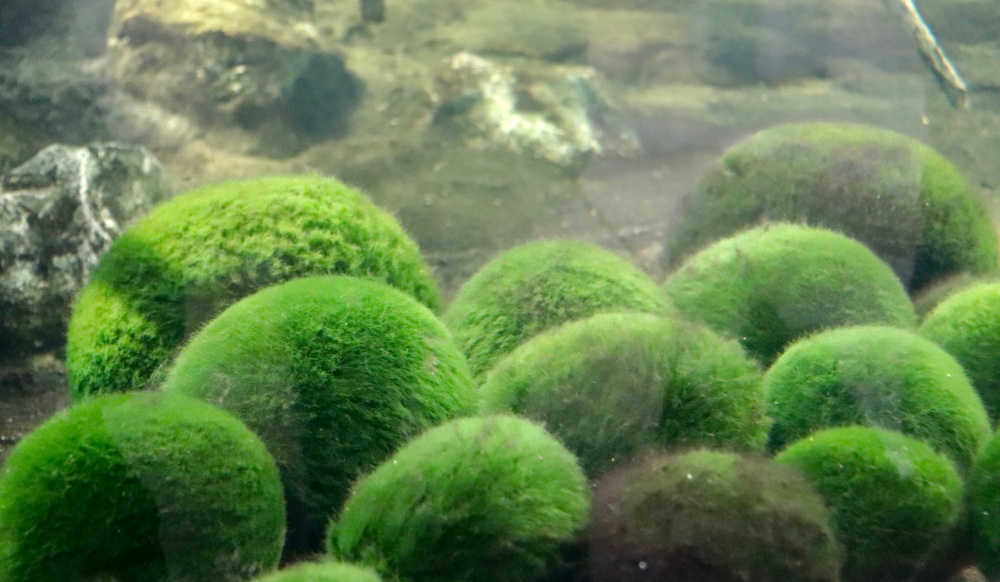
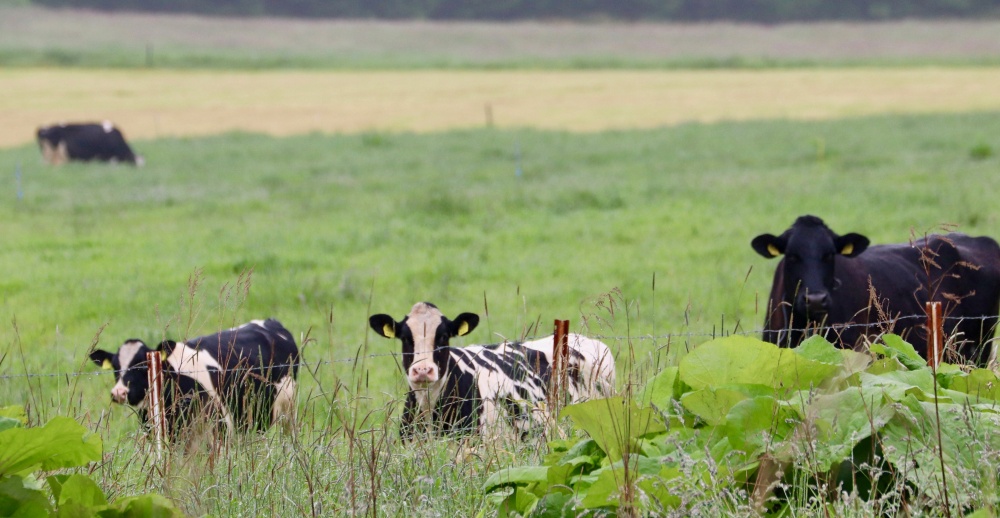
We were busy making marimo noises (or what we imagined algae would sound like) when we were ushered back onto the ferry to head back to port. Definitely not enough marimo time. Just as well, though, since I was eager to take Philip and Jules to our last lodging on this trip at a very special spot in the farmlands of Tsurui. We thanked the cows we passed along the way for providing us with the delicious milk, ice cream and beef we had consumed (more than I’ve had in a lifetime, I think) for the past week and a half. Turning off the main road onto smaller country roads we found ourselves in an incredibly idyllic place, Heart’n Tree bed and breakfast.
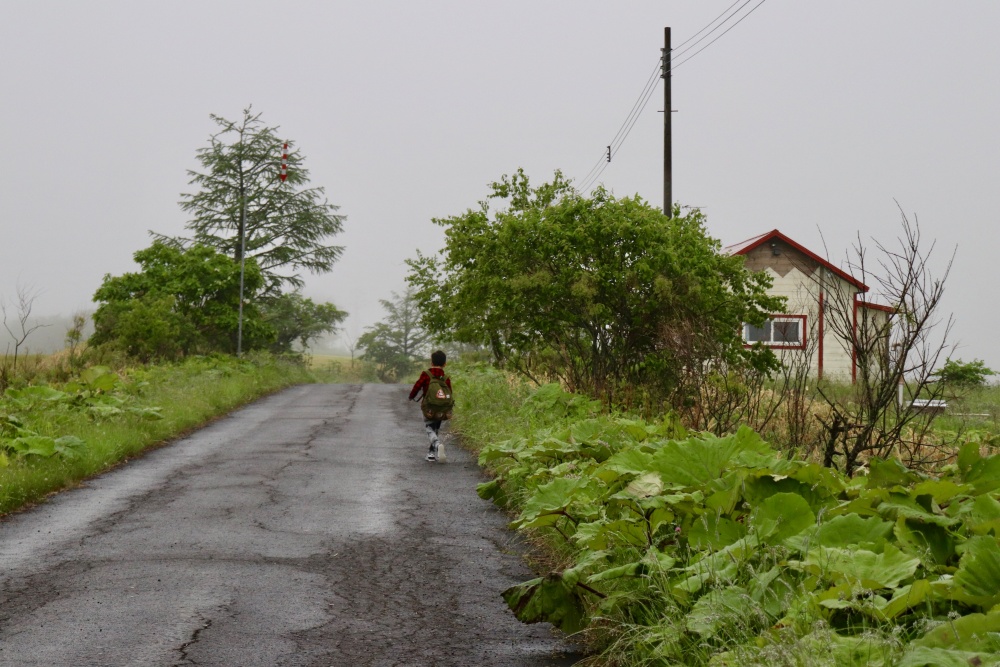
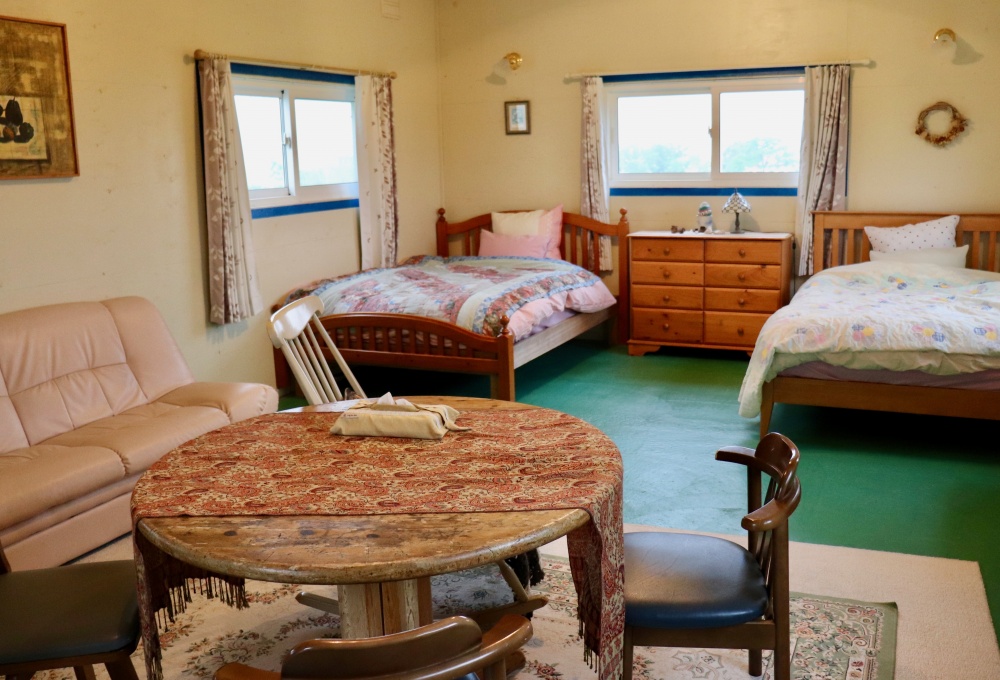
Heart’n Tree is a member of WWOOF (World Wide Opportunities on Organic Farms) where volunteers live with organic farming hosts as an educational and cultural exchange. Our hosts, Sachiko and Masato, ran a beautiful farm and even had homemade cheese on the delicious pizza for dinner. After so much meat and dairy products the gorgeous salad was just heavenly.
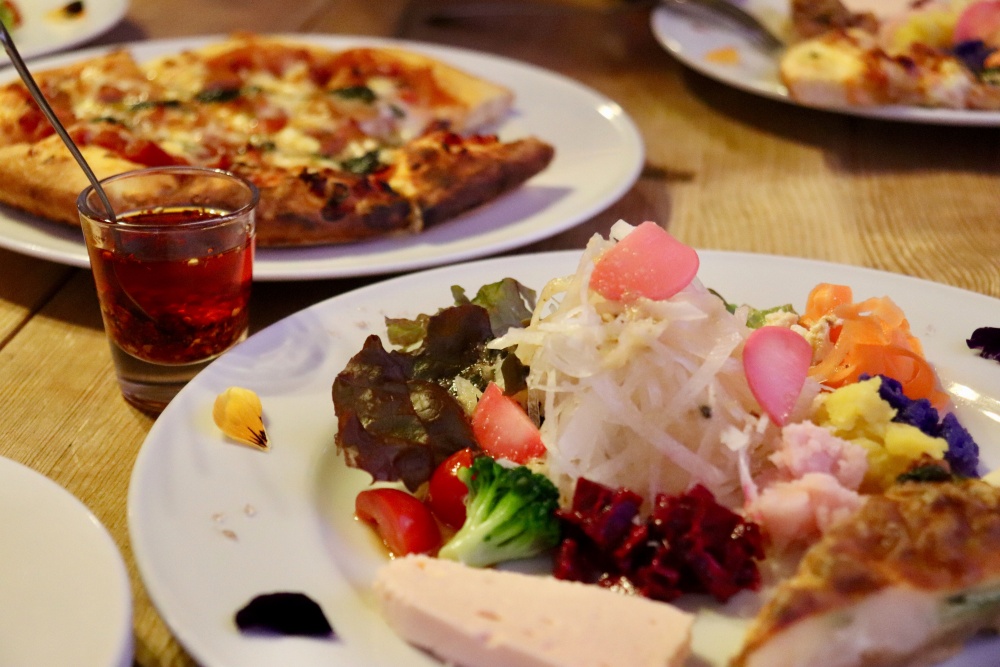
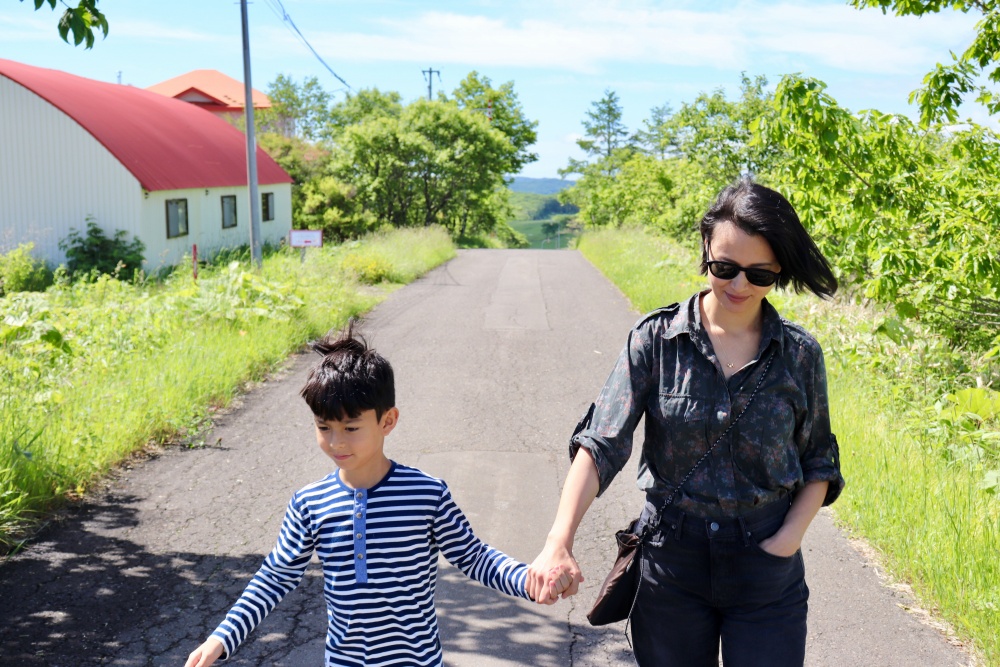
Yay, the sun came out on our last day in Hokkaido! I handed Jules my camera in the morning to go explore, and we had another beautiful meal thanks to Sachiko’s culinary magic. There’s nothing quite like freshly baked bread spread with homemade butter and raw honey.
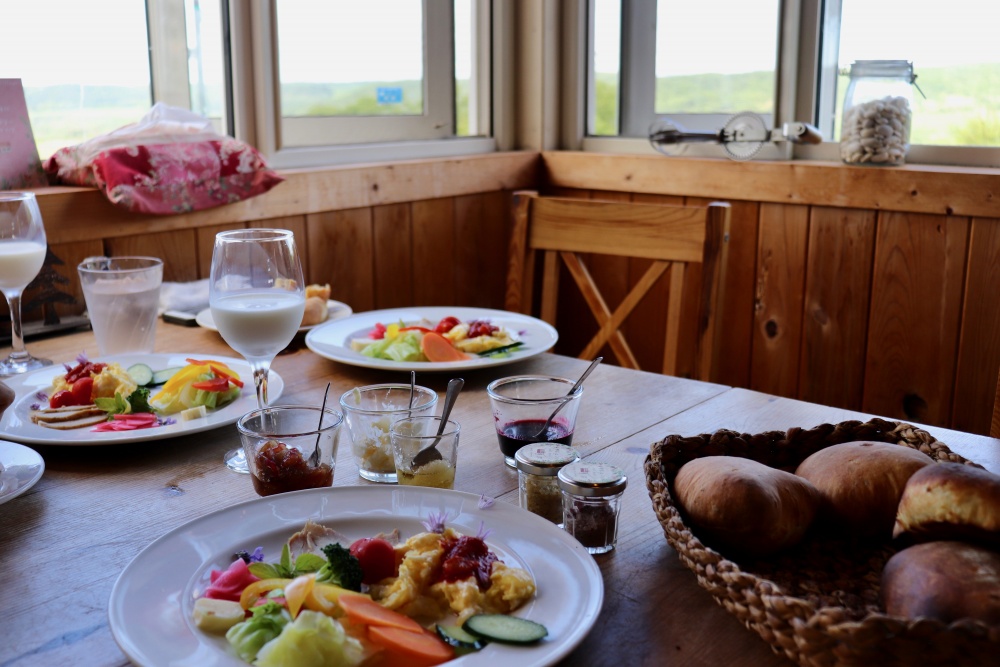


I wanted to show Philip and Jules a few more places before we boarded our flight back to Taipei. Thanks to a wonderful and talented college professor, Dr. Fritz Hertel, who introduced me to the beauty of bird watching I have marveled at the wonders of birds since then. In Hokkaido, the city of Kushiro is known for its wetlands and its red-crowned crane sanctuaries. Bird paradise! Our first stop was the Onnenai Visitor Center with its boardwalk traversing areas of high bird density. Unfortunately, the birds were avoiding the heat of the day, so we could hear them but we couldn’t spot a single bird (discounting the chicken-sized crows). Jules did manage to spot two snakes, though, so he left pretty satisfied.

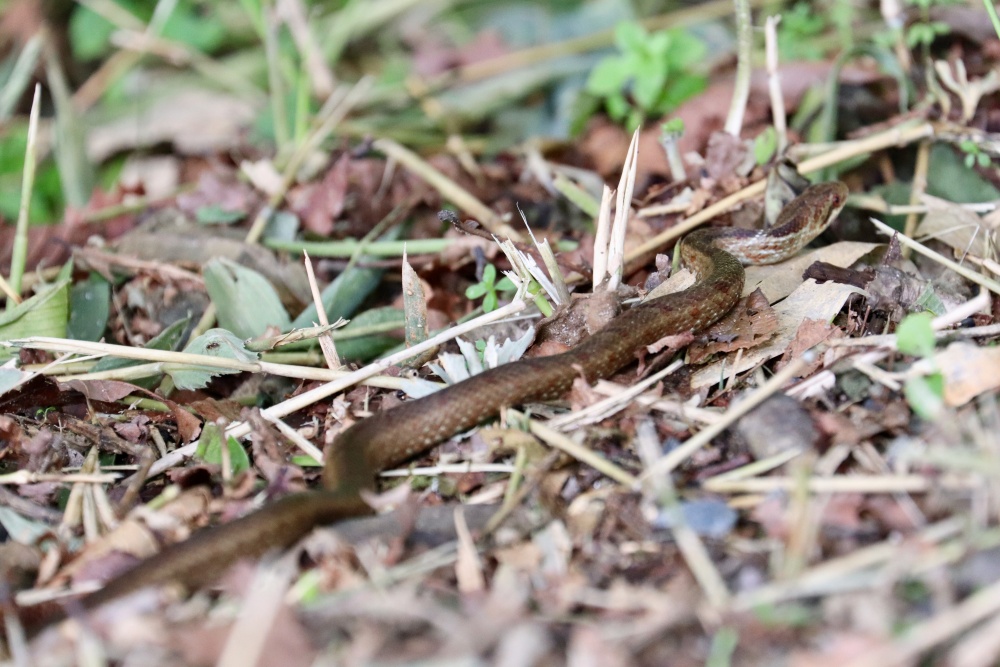
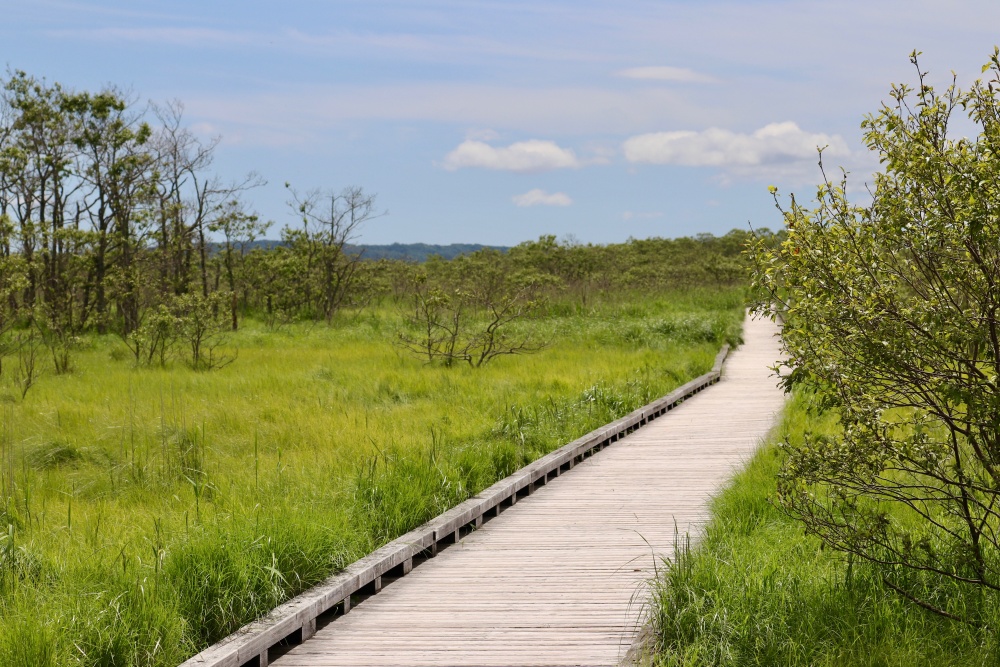

Next up was the Kushiro Marsh Observatory where we were able to get panoramic views of the Kushiro Shitsugen Wetlands (the largest in Japan). Like most other visitor centers we visited in Hokkaido this place was nicely laid out with clear information and beautiful displays. There was a wonderful video on the famous red-crowned cranes, which helped prepare us for our next and final destination — Kushiro City Red-Crowned Crane Natural Park.
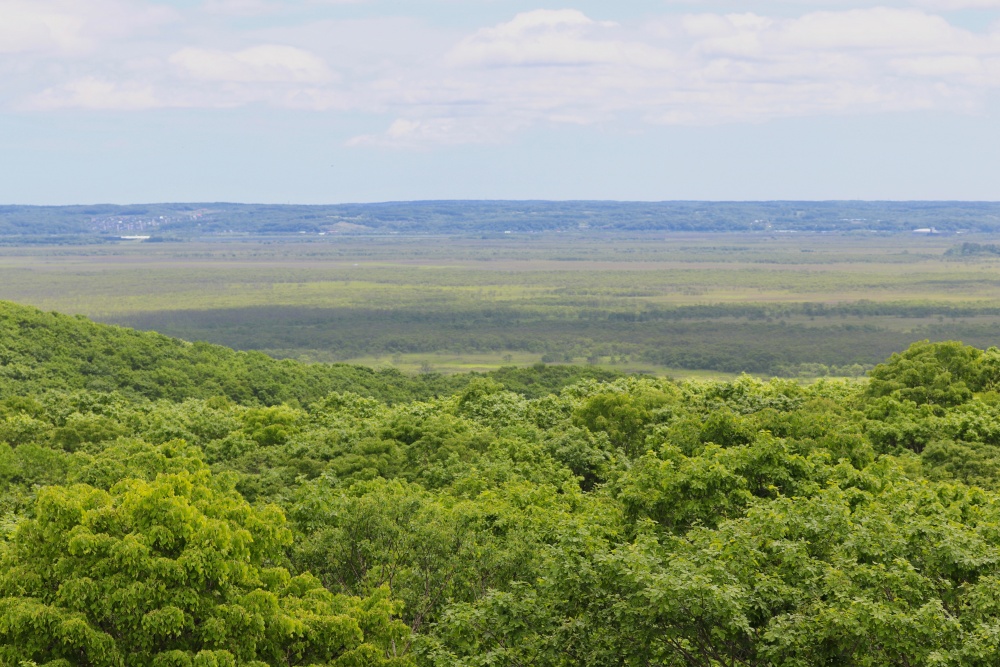
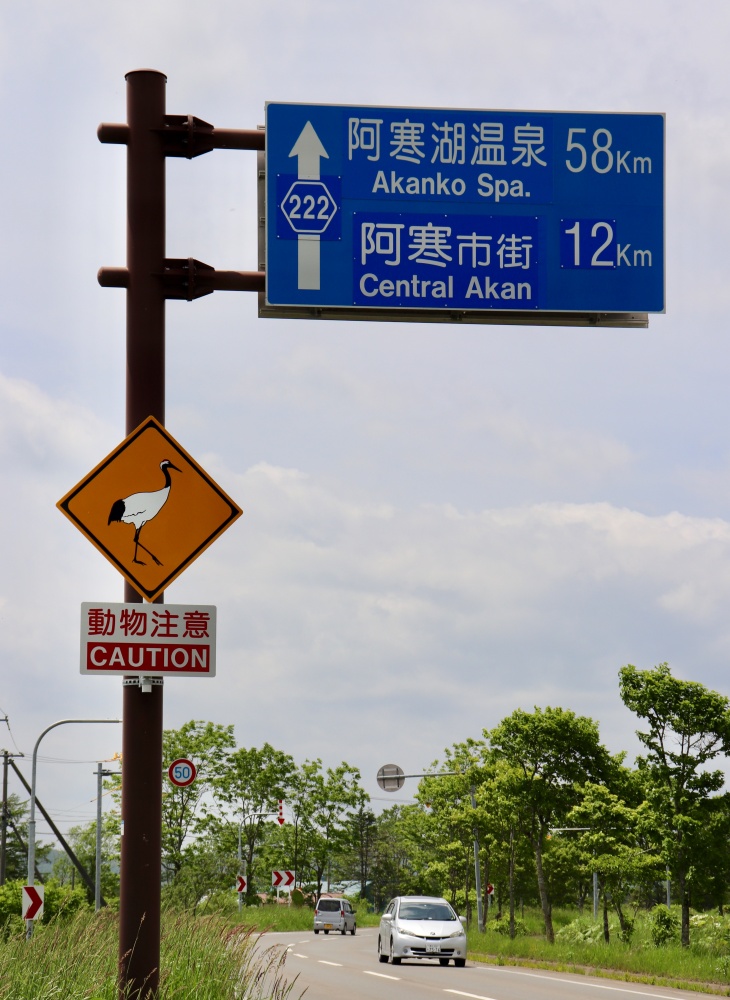
The red-crowned crane (or Japanese crane/Manchurian crane) is an endangered species with only a couple thousand left in the wild due to habitat destruction. They fly to Tsurui, Hokkaido in the winter to mate and leave again. Luckily, natural parks such as the one we visited have breeding programs to help revive this dying population of exquisite animals. We were fortunate enough to see a hatchling with both its parents and a fledgling with one of its parents. The icing on the cake was seeing a few grey herons in flight and a black kite perched high above.
This was a spectacular journey we will never forget.
